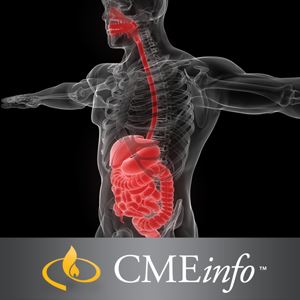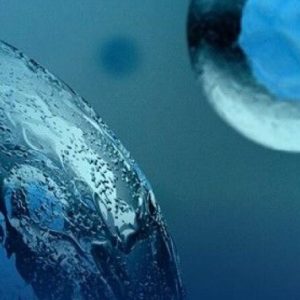Electrodiagnostic Medicine and Neuromuscular Disorders – A Case-Based Approach 2020 (VIDEOS)
This CME course in electrodiagnostic medicine consists of 35 one-hour lectures that focus on a wide range of peripheral nerve diseases. Key sections include focal syndromes, generalized disorders, motor neuron diseases, polyneuropathies, neuromuscular junction disorders, myopathies and special topics. Electrodiagnostic Medicine and Neuromuscular Disorders – A Comprehensive Review incorporates patient examples to illustrate typical and atypical presentations, and will help you to better:
- Apply best practices for evaluation of patients presenting with actual or suspected neuromuscular complaints
- Recognize classic, possible, and unlikely neuromuscular disorders according to clinical symptoms
- Assess the need of laboratory tests, electrodiagnostic studies, imaging, and muscle and nerve biopsies to establish a diagnosis
- Illustrate effective management of painful neuropathies
- Outline strategies to deliver the best care possible to patients with neuromuscular disorders
Expand Your Skills
Available online, Electrodiagnostic Medicine and Neuromuscular Disorders – A Case-Based Approach provides a maximum of 30.25 AMA PRA Category 1 Credits ™ and access to unbiased, evidence-based content and case-based reviews so you can expand your knowledge and incorporate the latest guidelines into your daily practice.
Designation
Oakstone Publishing designates this enduring material for a maximum of 30.25 AMA PRA Category 1 Credits ™. Physicians should claim only the credit commensurate with the extent of their participation in the activity.
Date of Original Release: November 30, 2020
Date Credits Expire: November 30, 2023
CME credit is awarded upon successful completion of a course evaluation and post-test.
The American Board of Psychiatry and Neurology has reviewed Electrodiagnostic Medicine and Neuromuscular Disorders – A Case-Based Approach and has approved this program as part of a comprehensive self-assessment program, which is mandated by the ABMS as a necessary component of Maintenance of Certification.
Learning Objectives
At the completion of this course, you should be able to:
- Describe the diagnostic approach to a patient presenting with myotonia
- Discuss the diagnostic tests used for focal syndromes
- Explain the classic signs and symptoms of amyotrophic lateral sclerosis
- Distinguish between Guillain-Barré syndrome and other acquired neuropathies
- Identify the differences between metabolic myopathies and mitochondrial myopathies
- Explain the electrodiagnostic approach to the patient with generalized weakness
- Compare neuropathies found in systemic disease with those found in cancer
- List commonly found neuromuscular mimics
Topics/Speakers :
Clinical Applications for Electrodiagnostic Medicine: Focal Syndromes
- Electrodiagnosis of Focal Upper Extremity Mononeuropathies – Michael P. Bowley, MD, PhD
- Electrophysiologic Approach to Brachial Plexopathies – William S. David, MD, PhD
- Focal Mononeuropathies in the Leg – William S. David, MD, PhD
- Electrodiagnostic Approach to Lower Limb Radiculopathy and Plexopathy – Haatem Reda, MD
- Peripheral Nerve Ultrasound Cases – Amanda C. Guidon, MD
Clinical Applications for Electrodiagnostic Medicine: Generalized Disorders
- Approach to the Patient with Generalized Weakness – William S. David, MD, PhD
- Approach to the Patient with Multifocal Weakness – Leeann Burton, MD
- Approach to the Patient with Scapular Winging – Kathy Chuang, MD
- Approach to the Patient with Diplopia – Paloma Gonzalez-Perez, MD, PhD
- Approach to the Patient with Facial Weakness – Kathy Chuang, MD
- Approach to the Patient with Clinical Myotonia – Paloma Gonzalez-Perez, MD
- Approach to the Patient with Cramps – Leeann Burton, MD
Motor Neuron Diseases
- Amyotrophic Lateral Sclerosis – Katherine A. Nicholson, MD
- Atypical Motor Neuron Disorders: Upper and Lower Motor Neuron – William S. David, MD, PhD
- Spinal Muscular Atrophy – Basil T. Darras, MD
Polyneuropathies
- Approach to Neuropathy – Reza Seyedsadjadi, MD
- Charcot-Marie-Tooth and Other Hereditary Disorders – Reza Seyedsadjadi, MD
- Guillain-Barré and Other Acute Acquired Neuropathies – Christopher T. Doughty, MD
- Chronic Inflammatory Demyelinating Polyneuropathy and Related Disorders – Reza Seyedsadjadi, MD
- Neuropathies Associated with Systemic Disease and Cancer – Christopher T. Doughty, MD
- Toxic Polyneuropathies – Mohammad Kian Salajegheh, MD
Neuromuscular Junction Disorders
- Myasthenia Gravis – Amanda C. Guidon, MD
- Congenital, Lambert-Eaton Myasthenic Syndrome, Botulism – Amanda C. Guidon, MD
Myophathies
- Approach to Myopathies/Muscular Dystrophies – Anthony A. Amato, MD
- Muscular Dystrophies – Vijay Ganesh, MD, PhD
- Congenital Myopathies – Basil T. Darras, MD
- Metabolic Myopathies – Anthony A. Amato, MD
- Mitochondrial Myopathies – Anthony A. Amato, MD
- Muscle Channelopathies – Mohammad Kian Salajegheh, MD
- Idiopathic Inflammatory Myopathies – Anthony A. Amato, MD
- Myopathies Associated with Systemic Disease and Toxic Myopathies – Vijay Ganesh, MD, PhD
- Approach to the Patient with Rhabdomyolysis – Joome Suh, MD
Special Topics
- Neonatal Hypotonia: Approach to the Floppy Infant – Basil T. Darras, MD
- Neuromuscular Mimics – Erik R. Ensrud, MD
- Rehabilitation of Neuromuscular Disorders – Kathy Chuang, MD













